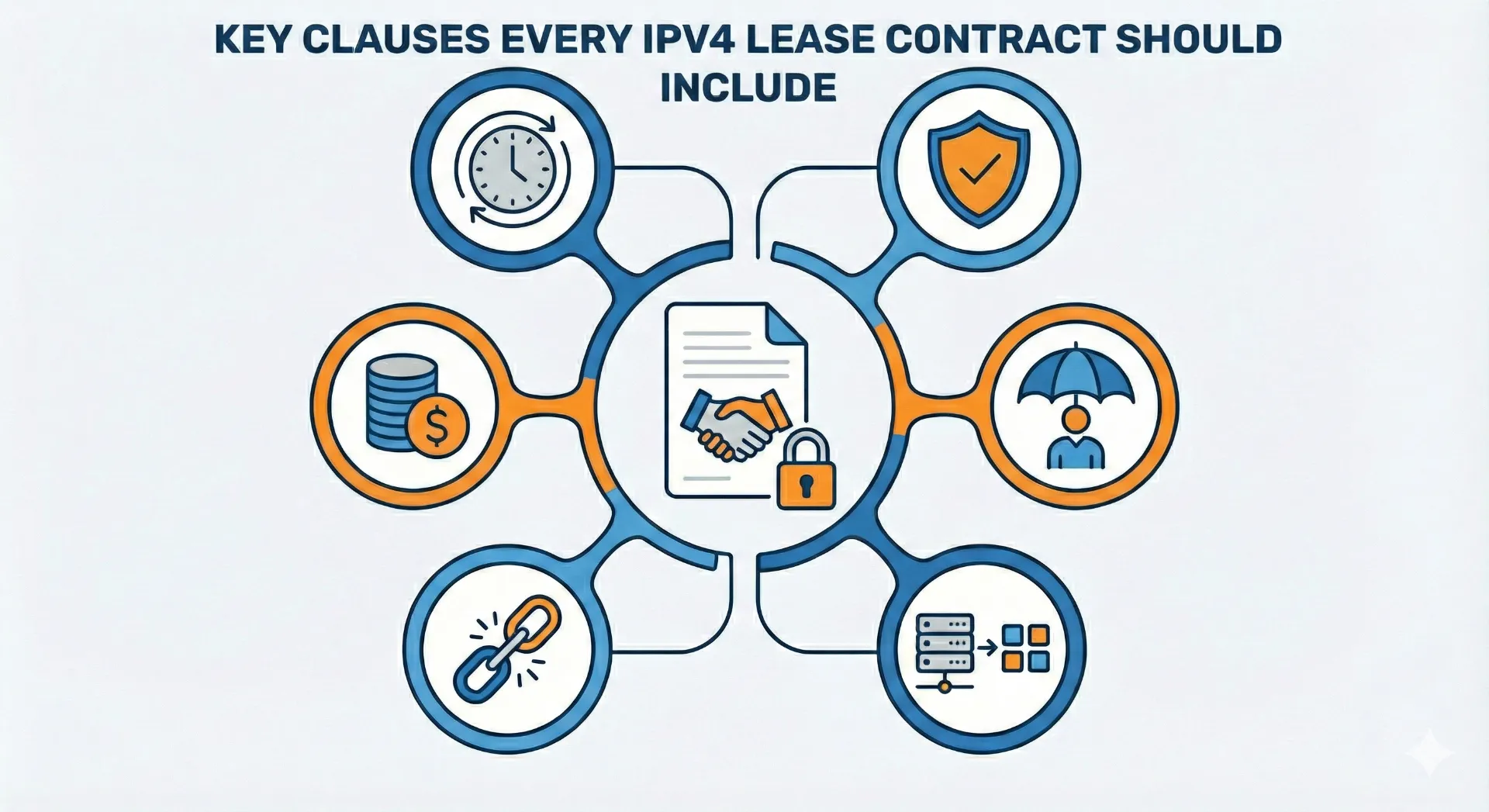What Happens When Your IP Allocation Runs Out

Table of Contents
ToggleAn allocation can run out for many reasons. The most obvious is growth. As a business adds customers or devices, the number of addresses needed keeps rising. What seemed like a large block a few years ago may look very small once demand doubles or triples. Cloud services, streaming platforms, and mobile apps all consume huge amounts of space, and growth in these areas pushes companies past their limits.
Another reason is inefficient use. Some companies were given large blocks in the early days and used them poorly. Address space can be wasted if it is not carefully planned. Once the block is tied up, it becomes difficult to reclaim. Organisations that depend on old habits may find themselves stuck when the allocation is gone.
The rise of new technologies also plays a role. The Internet of Things adds millions of small devices that each need an address. AI-driven services also expand networks quickly. Even with NAT and other tricks, the pressure is heavy. As more services move online, the allocations that once seemed enough become too small.
When allocations run out, the timing is rarely smooth. At that point, they must make urgent choices. Some buy blocks on the transfer market. Others lease addresses at high cost. Many are forced to adopt IPv6 more quickly. In every case, the lack of space creates stress.
Immediate Consequences of Running Out
The moment an allocation is gone, the problems start. A business cannot add new customers or turn on new systems, and people waiting for service may be told to wait longer. For companies that rely on constant growth, this is more than a pause. It can mean real loss.
Sometimes the shortage comes suddenly. A seasonal spike, a new contract, or an unexpected rise in traffic can push demand past the limit. When that happens, managers scramble for solutions. They may lease blocks at high cost, buy space if it is available, or cut back on expansion. None of these options feels ideal, but they are forced to act.
In many teams the first visible sign is onboarding freezes. Sales has deals ready, but provisioning cannot move because there are no free addresses to assign, so new accounts sit in a queue and the pipeline slows. Support volumes rise at the same time, since customers ask why activation takes longer and why timelines keep shifting. This turns a technical shortage into a customer-facing problem that hurts confidence.
Existing services can also show small cracks. Engineers may recycle addresses faster than usual, and that can lead to odd session issues, stale DNS records, or confused logs. One small glitch is manageable, but when load is high and the pool is tight, little issues pile up and feel bigger than they are. Teams spend time chasing symptoms instead of fixing the root cause, which is lack of space.
Contracts can add pressure right away. Some service level agreements include penalties for delayed activations or missed delivery dates. When addresses are missing, those penalties become real costs. Legal and account managers step in, and energy that should go to growth is spent on explaining delays and asking for leniency. In the meantime, competitors who still have room move faster and win impatient customers.
Security teams feel the pinch too. Emergency changes done under time pressure increase risk. Quick NAT expansions or rushed routing tweaks may leave blind spots in monitoring. After a week of patches, people are tired, change reviews are lighter than they should be, and mistakes are more likely. The shortage starts as a number problem, and then it becomes an operations problem.
Technical and Business Impacts
Networks depend on addresses to keep devices connected. Without them, errors spread. Engineers try stopgap methods like NAT, but every new layer makes the network more complex. Performance drops, and end users notice slower speeds or unstable connections.
The business side suffers too. Customers lose patience if services do not work, and once they leave, many do not come back. Firms also face unexpected costs. Buying or leasing at the last minute is expensive. Shareholders may see the shortage as poor planning, and confidence in management can fall.
Emergency NAT at the carrier level can help, but it comes with trade-offs. Logs must map each session to a subscriber and a port, and that creates storage and privacy questions. Troubleshooting gets harder, because many users appear to share one public identity. Abuse handling also takes longer, since investigators need port and time details to trace one bad action to the right account.
Email and reputation systems can feel side effects as well. If addresses are reused too quickly or pulled from mixed pools, deliverability can drop. Some mail receivers treat new or unknown space cautiously, and that can slow campaigns or break password resets. Marketing asks why mail is delayed, but the root is again the same: the address plan is under strain.
APIs and geolocation bring another layer of friction. When many customers appear behind the same public IPs, rate limits may trigger and third-party providers may flag traffic as unusual. Location services may misplace users if the public egress changes often. Product teams then add exceptions and workarounds, which increases code paths and future maintenance.
Costs keep stacking while the team fights fires. Extra monitoring, bigger log storage, faster hardware for stateful devices, outside consultants for emergency buys, and higher lease rates all arrive at once. Finance sees an unplanned spend curve, and planning meetings shift from quarterly goals to weekly survival. Teams feel the weight, and hiring managers worry that burnout will push key people to leave.
Meanwhile, roadmaps slip. Features tied to new regions or new customer tiers depend on clean address plans, and when those are missing, product launches move out. Sales must revise targets, which frustrates everyone. The company still wants to grow, but the foundation is not ready, so leaders pick smaller steps and hope the market waits.
Regional Differences in Impact
Shortages do not hit every region equally. Some parts of the world still have holders of large unused blocks, while others struggle because demand grew faster. In places where rules are strict, transfers take longer, and companies cannot move quickly to fix shortages.
In fast-growing markets, the shortage bites first. Mobile expansion and cloud services consume huge amounts of space, so shortages appear early. Local policy shapes outcomes more than many expect. Where registries allow flexible transfers with clear steps, buyers can act in weeks. Where paperwork is heavier, the same deal may take months. A firm that operates across borders learns to stage purchases where rules are smoother and then route traffic accordingly, but that adds design work and careful compliance checks.
Economic cycles matter as well. Regions with strong e-commerce peaks see yearly stress around holidays, and address pools run hot during those weeks. Teams that plan early can coast through, but teams that wait hit the wall and must pay peak prices. In regions with steadier demand, shortages arrive more quietly, and leaders sometimes miss the signs until a launch fails.
Data residency and security rules add another wrinkle. Some countries limit where user data can flow. If egress points must stay inside national borders, address pools cannot be shared across regions as freely. That makes local scarcity harder to smooth out with global tricks. Companies then keep separate reserves per country, which ties up space and money.
Language and vendor ecosystems play a role too. In regions with many brokers and experienced legal advisors, buyers find help faster and avoid bad blocks. In places with fewer specialists, firms lean on global partners and pay higher fees for diligence. Over time this creates a gap: the regions with better support move faster and pay less, and the rest learn by hard experience.
Options Available When Allocations Run Out
When a company finds that its allocation is gone, the first step is usually to look for more space on the transfer market. Buying blocks from another holder can be costly, but it is one of the fastest ways to secure more addresses. Some firms choose to lease instead, which can fill short-term gaps but often comes with high monthly costs. Leasing gives quick relief, yet over time it can add up to more than buying outright.
Another option is to make existing space go further. NAT is widely used for this purpose. It allows many devices to share fewer addresses, and in some cases this can delay the need to buy more space. The drawback is that NAT adds complexity and sometimes breaks certain services. Some companies also push ahead with IPv6 deployment.
In some regions, governments or registries provide help through policy. They may free up unused legacy space or allow easier transfers.
Long-Term Planning for Businesses
Running out of space is a short-term crisis, but the deeper question is how to plan for the long term. Businesses that buy their own blocks often do so with a view toward stability. Ownership reduces reliance on outside providers and prevents sudden shortages from stopping growth. Once space is owned, managers can plan new projects without fear that addresses will run out in the middle of expansion.
Long-term planning also means looking at technology. NAT can help, but it cannot be the final answer. Firms know that IPv6 is the real long-term fix, even if adoption is slow. Many now run dual systems, preparing staff and users for the shift. While this adds costs, it is seen as part of protecting the future.
Financial planning is just as important. IP space is now treated as an asset, and its value can rise. Buying early may cost a lot, but it often looks cheap compared to the price paid later. Companies that see addresses as assets build them into their balance sheets and treat them as part of overall strategy. This makes IP space not just a technical need but also a business investment.
Trusted IPv4 Leasing for Business Growth
Get enterprise-grade IPv4 space quickly, with seamless deployment and end-to-end management.
FAQs
Usually the company cannot add new users or devices. They may have to stop activations and delay projects until more space is found, which causes frustration and sometimes lost revenue.
Leasing gives fast relief but can be costly over time. Monthly fees add up, and the company never fully controls the space. Owning addresses is more stable, even if it costs more upfront.
No, conditions vary. Some regions still have large blocks from early allocations, while others ran out long ago. Rules and policies also shape how easy it is to transfer space.
Because they have value beyond technical use. Addresses can be bought, sold, and transferred. Their price often rises, so ownership shows investors that a company is prepared for the future
Related Blogs
As IPv4 scarcity deepens, carefully drafted lease contracts have become essential tools for managing risk, compliance and long-term network stability.Well-defined Read more
Key points:IPv4 transfer delays are primarily driven by registry policy complexity and incomplete or inconsistent documentation.Early preparation, pre-approval and professional Read more
Standfirst APNIC IPv4 transfers can stall on documentation, timing, and registry hygiene. Preparation, pre-approval, and clean records materially accelerate outcomes. Read more
As IPv4 scarcity deepens, carefully drafted lease contracts have become essential tools for managing risk, compliance and long-term network stability.Well-defined Read more
Key points:IPv4 transfer delays are primarily driven by registry policy complexity and incomplete or inconsistent documentation.Early preparation, pre-approval and professional Read more
Standfirst APNIC IPv4 transfers can stall on documentation, timing, and registry hygiene. Preparation, pre-approval, and clean records materially accelerate outcomes. Read more



